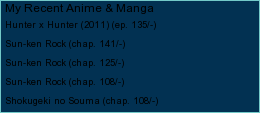Single Consonants
Most Japanese consonants are pronounced more or less the way the same letter would be pronounced in English. However, there are some important differences.
1. The Japanese “B” is generally pronounced like the English “b”, but less explosively. Examples:
a) {bentoo – box lunch}
b) {kaban – bag}
c) {binsen – writing pad}
2. The Japanese “D” is pronounced with the tip of the tongue touching the back of the upper teeth and is less explosive than the Enlgish “d”. Examples:
a) {dare – who}
b) {densha – train}
c) {doko – where}
3. The Japanese “F” is usually pronounced by forcing the air out between the lips as through blowing out a candle. Not that this consonant resembles the English “wh” in the following examples:
a) {fune – ship}
b) {furo – bath}
c) {fukai – deep}
4. The Japanese “G” has two sounds:
a) The 1st sound is at the beginning of a word, and it is pronounced like the English “g” in “go”. {ex. gaikoku – foreign country; gin – silver}
b) The 2nd way is when it’s in the middle of a word, and it usually has some nasal quality. The sound is something like the “ng” of the English word “singer”. {ex. hagaki – postcard; kagi – key; kage – shadow}
5. The Japanese “H” also has two sounds:
a) Before “a”, “e”, and “o” it is pronounced like the English “h” in “high”. {ex. hai – yes; hei – fence; hon – book}
b) Before “i” or “y”, it is pronounced like the English “h” in “hue”. {ex. higashi – east; hyooshi – rhythm, hyaku – one hundred}
6. The Japanese “J” is pronounced like the English “j” in “jeep”. Examples are listed:
a) {jagaimo – potato}
b) {jibiki – dictionary}
c) {juku – cram school}
7. The Japanese “K” is prounced like the English “k” in “kite”. Examples listed in the following:
a) {kasa – umbrella}
b) {kutsu – shoes}
c) {koya – hut}
8. The Japanese “M” is pronounced like an English “m”, but without tightening the lips. Examples:
a) {mikan – tangerine}
b) {mushi – bug}
c) {maiasa – every morning}
9. The Japanese “N” has two sounds in Japanese:
a) Before “a”, “e”, “o”, and “u”, it is pronounced with the tip of the tongue touching the back of the upper teeth. {ex. nashi – pear; neko – cat; numa – marsh}
b) The 2nd way is when it’s before “i” or “y”, it is pronounced like the “n” in the English word “news”. (“Mouth Technique” – the tip of the tongue is touching the back of the lower teeth and the middle part of the tongue is touching the roof of the mouth.) {ex. niku – meat; mishi – west; nyuuin – hospitalization}
10. The Japanese “P” is pronounced like the English “p” as in “paper”, but less explosively. Examples are:
a) {sanpun – three minutes}
b) {pan – bread}
c) {penki – paint}
11. The Japanese“R” is not pronounced like the English “r”, in which the tongue is rolled back and then pressed forward. (“Mouth Technique” – it is pronounced by first placing the tip of the tongue at the back of the upper teeth and then flapping it.) In this way the sound to English speakers is more like the sound of an “l”. Japanese has no “l” sound, and the “r” is used in pronouncing foreign loanwords with the letter “l”. Examples:
a) {riku – land}
b) {raigetsu – next month}
c) {roku – six}
12. The Japanese “S” is pronounced like the English “s” in “song”, but with less hiss. Examples are:
a) {saka – slope}
b) {sekai – world}
c) {sora – sky}
13. The Japanese “T” is pronounced with the tip of the tongue touching the back of the upper teeth and is less explosive than the English “t”. Examples:
a) {tamago – egg}
b) {te – hand}
c) {to – door}
14. The Japanese “V” is pronounced like the English “v” in “vain”. This sound appears only in words borrowed from Occidental Languages. Note that most Japanese do not use this sound but replace it with a “b”. Examples of both are listed below:
Interlingua Pronounced “V”
a) {vaiorin – violin}
b) {veeru – veil}
c) {viniiru – vinyl}
d) {revyuu – revue}
Japanese Pronounced “B”
a) {baiorin – violin}
b) {beeru – veil}
c) {biniiru – vinyl}
d) {rebyuu – revue}
15. The Japanese “Z” usually has two sounds in Japanese. Note however, that some Japanese mix the “dz” and “z” sounds described below without regard to the position of the letter of the word:
a) 1st, at the beginning of a word it has a sound similar to the English “ds” in “beds”. {ex. zaisei – finance; zaitaku – luxury; zoo – elephant}
b) 2nd, when located in the middle of a word, it is pronounced like the English “z” in “zero”. {ex. kaze – wind; mizu – water; kazoku – family}
|
